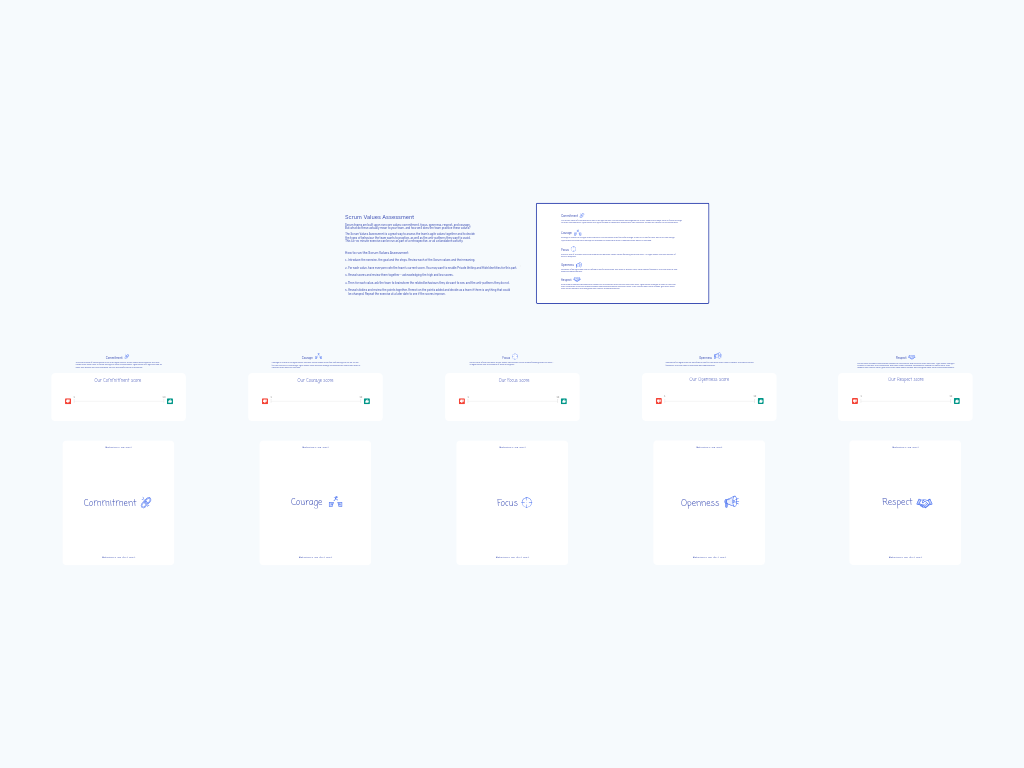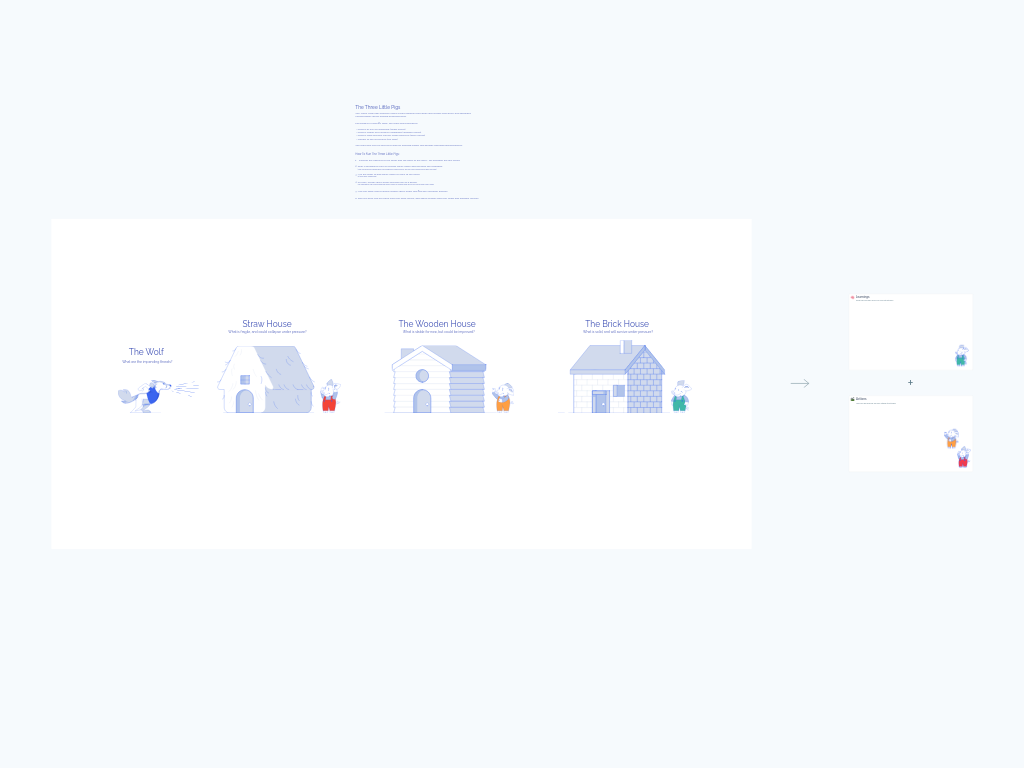Team Canvas: Build Team Identity & Establish Ways of Working
The Team Canvas is a collaborative workshop framework designed to help teams align on their identity, purpose, and ways of working together. Based on the Business Model Canvas by Alex Osterwalder, this structured activity helps development and product teams establish a shared understanding of goals, values, strengths, and working agreements—essential elements for high-performing agile teams.
What Is Team Canvas?
Team Canvas is a visual team alignment tool that brings team members together to explore and document the core elements that define their identity and collaboration style. Created by Alex Ivanov and Mitya Voloshchuk, it serves as a "social contract" that helps remote and co-located teams establish clear expectations and build cohesion.
The canvas consists of nine interconnected sections:
- People and Roles
- Common Goals
- Purpose
- Personal Goals
- Values
- Needs and Expectations
- Strengths and Assets
- Weaknesses and Risks
- Rules and Activities
Each section prompts meaningful conversations that help transform a group of individuals into a cohesive team with shared understanding.
Benefits & When to Use
Team Canvas is particularly valuable when:
- Forming a new team or welcoming new team members
- Transitioning to agile methodologies
- Experiencing team conflicts or miscommunication
- Starting a new project phase or initiative
- Conducting regular team health checks
Benefits of running a Team Canvas session include:
- Reduced ambiguity about team purpose and expectations
- Improved psychological safety by surfacing individual needs
- Greater alignment on priorities and working methods
- Enhanced team communication and conflict resolution
- Clearer understanding of team strengths and potential risks
How to Run a Team Canvas Session
Preparation (15 minutes)
- Schedule a 2-3 hour session with all team members
- Share the template link with participants and explain the purpose briefly
- Ask participants to reflect on their roles, expectations, and goals beforehand
Facilitation (120-150 minutes)
Introduction (10 minutes): Explain the Team Canvas framework and how completing it will help the team work better together.
People and Roles (15 minutes): Begin with introductions. Have everyone add sticky notes with their name, role, and a brief description of their responsibilities within the team.
Strengths and Weaknesses (30 minutes): Have team members identify what skills and capabilities they bring (strengths) and what challenges or limitations they foresee (weaknesses).
Purpose and Goals (30 minutes):
- Discuss why the team exists (Purpose)
- Define what measurable objectives the team aims to achieve (Common Goals)
- Allow individuals to share what they personally want to get from being part of the team (Personal Goals)
Values and Needs (30 minutes):
- Define core principles and behaviors the team values
- Identify what each person needs to perform at their best
Rules and Activities (20 minutes): Establish working agreements, communication protocols, and decision-making processes the team will follow.
Review and Insights (15 minutes): Have each person share their most significant insight from the session and how it will affect their approach to teamwork.
Next Steps (10 minutes): Document agreements, assign any follow-up actions, and decide how the team will revisit and refine the canvas over time.
Tips for a Successful Team Canvas Session
Psychological safety first: Emphasize that this is a judgment-free exercise designed to help everyone work better together.
Use prompting questions: For each section, prepare specific questions to spark thinking when participants get stuck (examples are included on the template).
Balance participation: Ensure everyone contributes to each section, not just the most vocal team members.
Document digitally: Capture all outputs in your Metro Retro board for future reference and team onboarding.
Revisit regularly: Schedule quarterly check-ins to review and update your Team Canvas as the team evolves.
Follow through: The canvas is only effective if the team actively applies the insights gained—establish accountability for putting agreements into practice.
Remote facilitation: For distributed teams, consider breaking the session into multiple shorter meetings to maintain engagement and prevent video conferencing fatigue.
Remember that Team Canvas is not a one-time activity but a living document that should evolve with your team. The true value comes from the conversations it generates and the shared understanding it creates.



